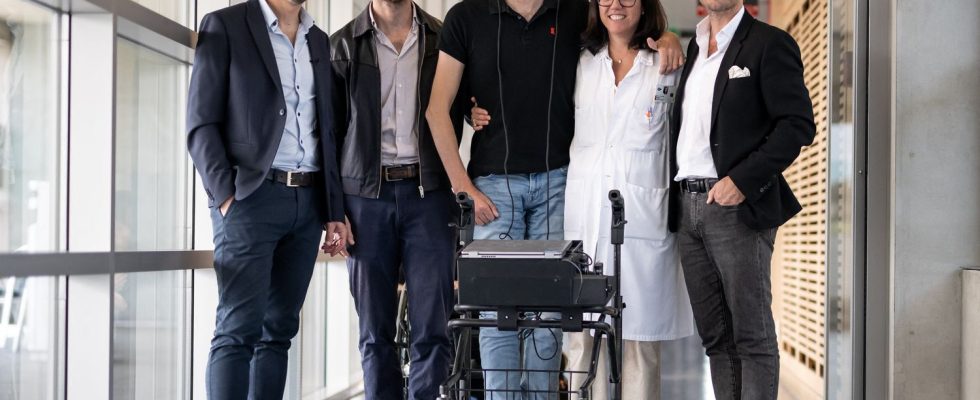“I started on rodents 20 years ago, then primates,” says neuroscientist Grégoire Courtine, who measures all the way to the feat.
“The first time he walked again, after several years of paraplegia, he really had a smile on his face”. Jocelyne Bloch, neurosurgeon at the University Hospital of Lausanne, and Grégoire Courtine, neuroscientist at the Federal Polytechnic School of Lausanne, tell Thursday, May 25 on France Inter the moment when a paraplegic was able to regain natural control of walking by thought . A first, made possible by the coupling of two technologies restoring communication between the brain and the spinal cord.
“The face” of this patient, Gert-Jan, “lit up, although he is usually a very introverted Dutchman”, continues Jocelyne Bloch, who participated in the research that led to this scientific feat, as did Grégoire Courtine. “To see this technology being able to allow someone like Gert-Jan, paralyzed for ten years, to move his legs voluntarily, with that smile on his face, was a great reward”, is moved the latter. At that moment, he was also able to measure the progress made: “I started on rodents 20 years ago, then primates”he recalls.
“He no longer thinks, everything happens naturally”
Thanks to this feat of science, the daily life of this 40-year-old Dutchman has improved. “Yesterday, with Jocelyne, we were with him on the Lausanne market, he bought his strawberries”, says the researcher. Walking, however, asks Gert-Jan “some effort”, he acknowledges. “He walks slowly, also because of the technology: this ‘technological miracle’ must be set to music to allow his attention to be decoded, to be sent to a spinal cord stimulator”he adds.
“He can easily walk 20 minutes at a stretch.”
Jocelyne Bloch, neurosurgeonat franceinfo
“It’s not really painful, but still, it’s still difficult for him to make long journeys”, she adds. whatever, “he doesn’t necessarily want to do a feat of length”. “For him, what is important is to use it [la marche] in everyday life to do activities, like a meal at home, to move from one place to another, to see friends or have a beer…”she explains.
Gert-Jan, who does not wish to give her last name, has made enormous progress, underlines Jocelyne Bloch: “At the beginning, right after the operations, he had to think about what he was doing. He said to himself: ‘I feel like a child of one or two years old who is learning to walk’., she explains. Currently, “He no longer thinks, everything happens naturally: he can talk and walk, he can walk and then move his arm, go shopping without it disturbing the decoding of his brain. He has really trained his brain to walk naturally”she welcomes.
